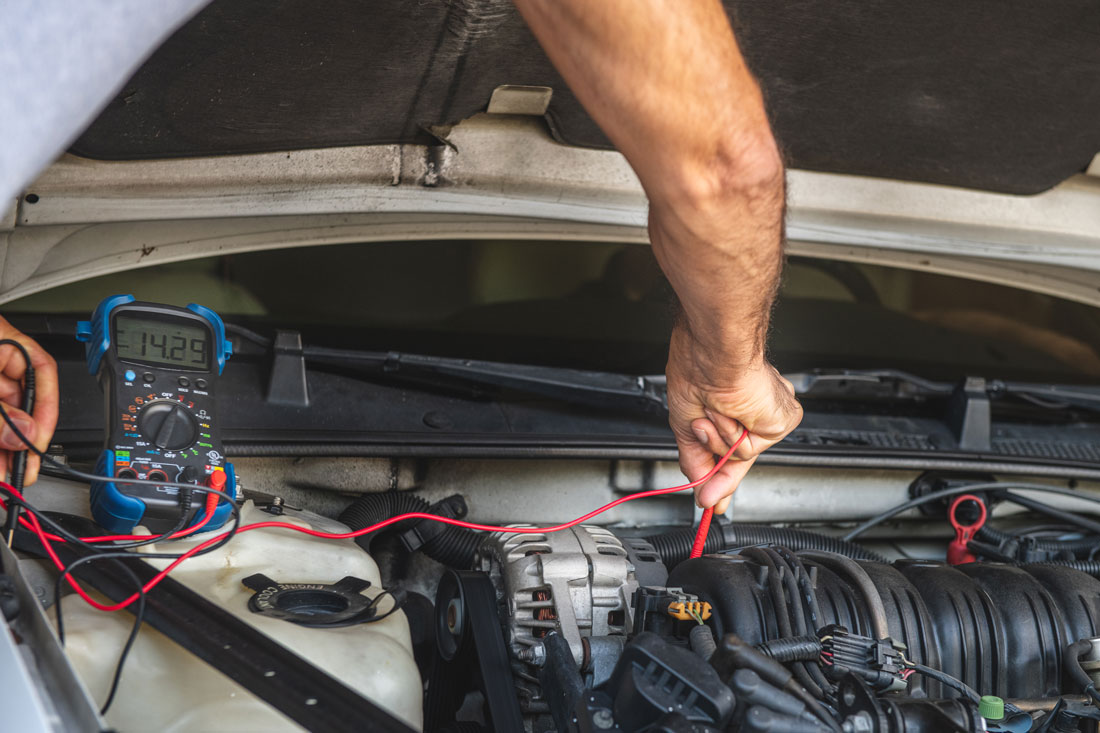Can you make sure your car’s alternator is in tip-top shape? It’s hard to tell if your generator is working properly if you don’t know how to check. The easiest way to check is to use a voltmeter. If you’re familiar with cars and know a simple test, here are some other things you can try. Read on to learn more about how to check your generator to make sure it’s working properly.
Use a Voltmeter
Buy a voltmeter. It can be purchased at any auto parts store for less than $20. You don’t need to buy expensive ones, a cheap voltmeter can also be used for testing.
- If you have a multimeter, you can replace the voltmeter. Multimeters can measure voltage and other electrical properties, such as current and resistance. When checking the generator it is necessary to measure the voltage.
Check the battery first. The battery is needed to start the generator, and in turn, the battery needs to be charged when the generator is started. This means that if the battery charge is too low, the generator may not start, which will render other voltage testing methods completely useless. If it’s too cold or the battery is too old, it’s most likely that the problem is caused by the battery rather than the generator, which is why it’s important to check the battery before checking the generator. Here’s how to do it:
- Turn off the engine. Be sure the engine is turned off before using the voltmeter.
- Open the hood.
- Connect the voltmeter to the battery. Connect the red connector on the battery to the red connector on the voltmeter, and connect the black connector to the black connector, avoiding skin contact with the battery during this process.
- Read the voltage index. If the voltage reading is above 12 volts, then there is enough energy to start the generator and you can use a voltmeter to check.
- If the battery is low on electrolyte, either wait until it’s full and start again before testing, or try a different method of checking the alternator. Start the vehicle and adjust the engine speed to 2000 rpm. The battery provides power and the voltage regulator makes the generator reach a high level.
Keep the generator running and retest the battery with a voltmeter. The voltage reading at this time should be around 13 volts or a little higher. If the voltage fluctuates between 13 and 14 volts at different speeds, the generator is in good condition. On the other hand, if the voltage remains the same or decreases, then the generator is indeed faulty.
Monitor the Generator
Check generator gauges. If you have a volt/amp meter, the generator’s data will be displayed on it. Turn on the AC or heater ventilator, headlights, and any other accessories that keep the generator running, and see if the voltage or amperage on the meter drops. Generally speaking, if the voltage count when the engine is running is higher than when the engine is off, then you are sure the alternator is charging.
Pay attention to the sound of the generator when the engine is running. If there is a problem with the bearings, you will hear a very harsh sound coming from the front of the car. As the power used by many electrical components increases, this sound will become louder and louder.
Start the engine, turn it off after a few minutes, and touch the generator. If the generator is hot, the bearings may be worn or the insulating copper windings may be damaged, indicating that the generator will soon cease to function.
Turn on the radio and start the engine. If your radio crackles or the sound quality is muffled whenever you step on the gas, there’s a good chance that there’s something wrong with the alternator.
Find an auto parts store to test the alternator for free. Because many stores prefer you to buy new generators from them, they will also offer free testing to slightly increase their competitiveness. Of course, to be on the safe side, it is better to remove the generator before sending it to the shop.
Tips
- Even if it is determined that the generator is faulty, the fault may be caused elsewhere. For example, the fuse may be damaged, the relay may be damaged, or the voltage regulator may be defective.
- Check that the engine is running and keep hands, loose clothing, and jewelry away from moving parts.
- Some people recommend testing the alternator by starting the car and undoing the negative battery cable to see if the engine is failing. Never attempt this method as it may burn out the voltage regulator, generator, and other electrical components.

